Primal Endurance On Gravel: A View From Anthropology – by John Ingham
Knowing the ancient beginning is the essence of Tao.
–Lao Tsu, Tao Te Ching, verse 14
Tell me, what is it you plan to do with your one wild and precious life.
–Mary Oliver, from The Summer Day
It’s likely that our physical and emotional health depends importantly on how much we recreate the endurance running and the natural, nutrient dense eating of our Paleolithic ancestors. Ancestral genes were optimized for this regimen over a couple million years, whereas sedentary lives, refined carbs, sugar, and processed food have been common for less than a hundred years, hardly enough time for DNA to catch up if it ever could.
Here, I broaden the evolutionary background of endurance to include mind and emotion. You are no doubt aware that our capacity for long-distance running can be traced to the first species of Homo, roughly two million years ago. The anthropology was popularized in Christopher McDougal’s Born to Run (Vintage Books, 2009) and has become part of the Paleo/Primal movement. 1 Modern human skeletal-muscular structure, skeletal remains of ancestral Homo, increased capacity for thermoregulation, and observations of surviving hunter-gatherer groups in the early twentieth century imply that Paleolithic people practiced persistence hunting, that is, tracking and running animals to exhaustion. 2 Accordingly, large-sample studies find almost no point where more aerobic exercise is not better for us. 3
We might also enquire into the psychological side of persistence hunting. We know that there is more to endurance than athletic ability and training. Here, I will be pondering why riding gravel is so satisfying and why we can ride long, hard, and fast. I will suggest how we can improve personal performance, but I will be mostly interested in how our brains as well as our bodies are “born” for long distance exercise. I will be especially interested in an elusive factor we will call “transcendence.” In transcendence, the self seems to temporarily disappear or blend with the world. The “self” here is not the whole person or all consciousness. I use the word narrowly for the stories we tell ourselves about ourselves. It is the incessant chatter in our minds about our pasts and futures, about our failures and successes.
I suspect that a series of states along a “continuum of transcendence” were part of ancient hunting and are no less a part of modern endurance sports. They affect focus, pain tolerance, mood, and inspiration. In transcendence, loss of concern for the self comes into play as we respond to challenge. It can facilitate learning athletic skills. And because transcendental states involve courage, curiosity, and openness, they support moving into the unknown.
Both the ego and transcendence are conscious, although egoic consciousness is often dreamy and self-centered, where that of transcendence tends to be bright and spacious. Throughout the discussion, I will be focusing on differences and interplay between inner directed consciousness, on the one hand, and externally directed consciousness, on the other.
I
Let’s begin with life and consciousness as such. I have been influenced by Karl Friston and Mark Solms on these topics. They are two of the world’s most brilliant neuroscientists—Friston is probably in line for a Nobel Prize—and they are laboring hard to understand the nature of life and consciousness.
For Friston and Solms, resistance to entropy is the defining feature of life. Animals preserve their integrity by avoiding the Second Law of Thermodynamics, the constant dissipation of information and energy. They perform this feat with homeostatic mechanisms that keep them within tolerable limits and prevent them from being absorbed by the general entropy. If it gets too hot, for example, animals slow down, pant or sweat, or move into the shade. We and other creatures have many such mechanisms, one inside another, like nested Russian dolls. Surrounding them is a “Markov Blanket” or shell that defines their individuality, buffers environmental influences, and mediates perception and action in response to the
surrounding environment. 4
Most homeostatic mechanisms operate automatically below awareness. The mind is constantly working to predict and control the future, usually with automatic, unconscious habits, routines, etc. It is estimated that 95% of this brain activity is unconscious. The unconscious automaticity saves energy by drawing on memory. In experiencing what we think is the world, much of the time, zombie like, we are experiencing expectations more than the world per se.
So why are we conscious at all? There are various hypotheses, but much evidence implies that consciousness exists to deal with novel events and situations that cannot be managed with unconscious models and automatic perception or action. 5 Using information theory and thermodynamics, Friston refers to the difference between models of the world and reality as “free energy.” Novel events unpredicted by models are referred to as “surprisal.” Consciousness allows us to observe and cope with the unexpected. Learning about surprises in turn allows us to update or “reconsolidate” old memories and revise unconscious expectations. This too involves consciousness.
Solms refutes the common notion that consciousness is a uniquely human phenomenon mediated by the cerebral cortex and adduces convincing evidence that the primary locus of consciousness is a small part of the brain stem responsible for rudimentary drives and feelings. These feelings, he contends, register good and bad deviations from the settling points in the homeostatic mechanisms. The feelings drive and highlight entropic and anti-entropic conditions and action and thus allow the subject to “know” what needs to be done to keep the homeostat settling points in order. Feelings are by definition “conscious.” Although Solms is a psychoanalyst as well as a neuropsychologist, he turns the classical Freudian scheme upside- down. In his view, the “id” is conscious and intentional, whereas much of the cerebral cortex is
unconscious and automatic.
In just the last twenty years, other neuroscientists have discovered that consciousness is elaborated in two large cerebral networks known as the Default Mode Network and Task-Positive Mode Network. The first is internally focused and the second is externally focused. About two-thirds of Default Mode activity comprises mind-wandering, daydreaming, ruminating about the past, and worrying about the future. Accordingly, Default Mode activity is manifested in anxiety, depression, and addiction. Epinephrin, a neurotransmitter associated with fear, energizes the Default Mode. Accordingly, the Default Mode has close connections with the amygdala, a nucleus that mediates fear. In short, Default Mode activity is often
egocentric and worried about self-preservation.
Switching from internal to external attention involves oxytocin, the hormone that supports love and bonding. 6 The Task Mode is active when performing a task, caring about other people, and attending to the world around us. It is energized by pleasure-producing dopamine pathways that power the brain’s SEEKING system and thus foraging, curiosity, and risk-taking. The Task Mode is also active in the various forms of transcendence, that is, when we are not preoccupied with the self. 7
As we shall see, the two neural networks are part of a coherent system, but we can also view them as supporting two contrasting ways of being in the world, one more defensive and the other more courageous. In different but complementary ways, they address the fundamental problem of reducing free energy and surprise.
In nature, surprises ordinarily represent danger. Avoidance and negative feelings are the default responses to them. As Solms puts it, “viewed from a certain perspective, it is precisely the brush with death that our feelings evolved to prevent” (p. 268). The SEEKING drive or emotion, and external attention more broadly, are exceptions to this pattern. They involve an active approach to the world. Rather than fear, they are associated with joy, curiosity, a sense of mastery, etc.
SEEKING is unusual among basic emotions in that it proactively engages with
uncertainty. This is the origin of novelty-seeking and risk-taking behaviors. Foraging
makes us explore interesting things, so that we will know what to expect when we
encounter them in the future (Solms, pp.107-108).
SEEKING can seem more likely to entail a “brush with death,” but, paradoxically, it is a roundabout way of avoiding death. We can think of it as an orientation more in keeping with the way the world is, rather than an orientation that wishes the world were otherwise.
II
In Chinese Taoism, the Tao is the Way, or Road, or Path. The Tao is also the unnameable Force behind the Cosmos. One can picture it as a flowing river. It is better to move with the Tao than against it. This requires wu wei, or flow. Wu wei is also known as “effortless action” or “action that is non-action” (see Lao Tsu). Flow is a grounded, bodily experience; Taoists believed that flow can be cultivated with athletic movement and that it promotes a longer life. For them, it is a way of integrating different parts of the world. In the Taoist mandala, wu wei is the curved line separating and connecting Yin and Yang. In modern neuroscience, flow is a blend of heightened consciousness and unconscious automaticity. It is what is happening when athletes are performing out of their minds and in the zone.

The Western psychologist Mihaly Csikszentmihalyi (pronounced Chick-sent-me-high) and his co-investigators found that flow is often the best experience people remember. 8 It occurs when there is a balance between skill and challenge, more so when action is on a razor’s edge between the two. When the balance is sustained, action happens smoothly, fluidly, and easily, without apparent effort. Flow is transcendental in the sense that the self disappears. As in wu wei, one blends with the world and moves with it. Because there is no self-consciousness, there is less fear. As attention focuses on the present moment, the past and future all but vanish. And as the self dissolves, so too does concern with personal pain and suffering. Steven Kotler notes that flow is especially common in action and adventure sports, where challenges are huge, skills are highly refined, and where failure can be existential. Being in nature facilitates flow because nature is more challenging and dangerous and because the necessary strength and skill needed to deal with it are correspondingly greater. 9
Nature probably plays a role in endurance performance beyond high stakes settings for balancing skill and challenge. In 1984 Edward O. Wilson argued that “biophilia,” or love of life and nature, is rooted in our DNA. We have evolved to love nature because nature nourishes us; it is so to speak, our mother, our home. There is overwhelming evidence that Wilson was on to something. In study upon study, being in wilderness or back-country or just in a local park promotes emotional well-being and physical health. 10 Awe is part of this emotional reaction to nature. Many trainers and sport psychologists have noted that stress and anxiety hinder performance while happiness and hope improve it.
Awe is a form of transcendence. It occurs separately or as part of being in flow. 11 While it is a positive experience, like flow it suggests risk and danger. We experience awe in the presence of the vastness and novelty of nature. Awesome scenes are beautiful and inspiring, but they are also unfamiliar and hint of mortality. Viewing them, we sense our insignificance and impermanence. They leave us wondering about the greater meaning of existence. In this way, awe has often been seen as the essence of spirituality.
Awakening has the same features as flow and awe but takes them to another level. There is a loss of self and, simultaneously, a profound sense of connection with the world. In the classic study of awakening by the Canadian psychiatrist Richard Bucke, this sense of connection is described as “cosmic consciousness.” In his study and many since, awakening also includes compassion for others, courage, tolerance for pain and suffering, and diminished fear of death. It is sometimes psychedelic. All experiences along the continuum of transcendence can be seen as aspects of an openness to the world in which the self is barely present or absent altogether.
There is a revealing affinity between movement and transcendence. The distinguished psychologist Kelly McGonigal explores the strong links between physical movement, on the one hand, and hope, courage, social connection, happiness, and joy, on the other. She emphasizes that these effects are strengthened in nature and by social connection.12 McGonigal does not discuss transcendental consciousness in physical activity explicitly, but she describes it nonetheless in so many words. The positive emotions she finds in association with movement are tell-tale signs of transcendence.
You might be saying to yourself, Okay Ingham, this all sounds good but how exactly can I improve performance? Well, you could consult with Kotler. He claims he can teach us, for a price, to draw on what adventure athletes have learned about flow and then use it to achieve success or make money in everyday life. His hyperbolic enthusiasm is a bit much for me, and I admit that the mountains and gravel for me have been ways of escaping the self-promotion and materialism in our society, not a means of monetizing them. I am probably being too hard on Kotler. No doubt he means well. In any event, I am not sure that what he is offering works—egocentric ulterior purpose is the antithesis of flow.
I would rather see us learn more about flow firsthand by taking long gravel rides or climbing mountains. This said, we know that flow happens when there is a balance between skill and challenge. It also happens as the ego stops worrying and giving orders, and just lets the body and mind do what they know how to do. We can take on challenges that require every bit of our skill, and we can acquire skills by learning more from bodily experiences without judging them as successful or unsuccessful. Non-judgmental awareness is a more helpful in learning athletic skills than instructions from experts or, orders and insults from a controlling ego. Flow also happens when we are absorbed by what we are doing and not
thinking about results. Focusing on minimal gains during a race is more likely to produce flow, and more likely to increase mph, than daydreaming about having a great finish.13
I am reminded of a piece I did on racing as non-racing (Non-racing). At the time, I was commenting on how gravel racing is not just about trying to do better than others, but also about the joy of riding and being with others, win or lose. I was not yet considering that action that is non-action might boost performance. I wish I had. I recall that many of my best efforts on the bike have happened when I was into the riding or found myself in an impromptu race, that is, riding or racing for the fun of it. There is also something about racing. I am often swept up in the flow of a race, surprising myself as I ride beyond what I thought possible. The key to these good experiences does seem to be immersion in the present moment rather than focusing on results. I am usually disappointed when I set out on a ride aiming for a new personal best.
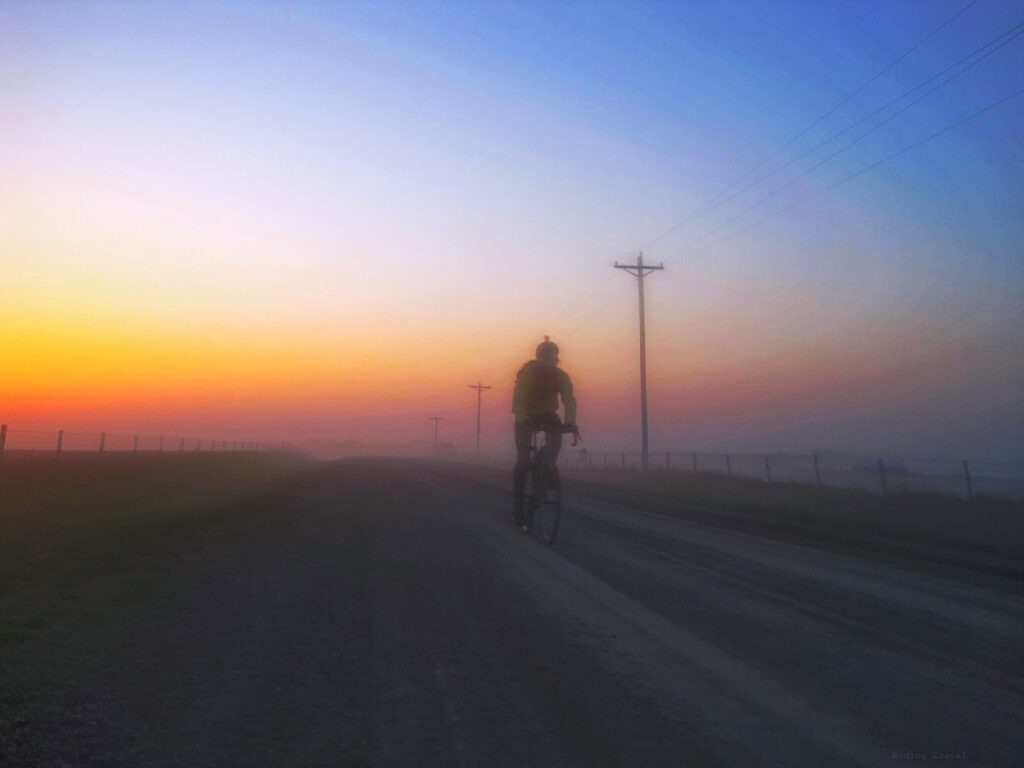
The 2021 Day Across Minnesota was instructive. I had not been training for long rides and intended to ride only in the cool of the night for eighty-five miles. In early January of 2020, a virus, possibly Covid, permanently damaged my kidneys, so I must be even more cautious about dehydration. I had no expectations, except for wanting to see if I could avoid a navigation error that cost me a DAMN finish 2019. Nevertheless, I rode well for not having trained, not having skin in the game, and being a medically compromised 80-year-old. Notably, the conditions for flow and awe were all there. The deep sand and darkness were challenging, and yet I was skillful enough. The pleasure of the ride outweighed the effort, pain, and suffering. Indeed, for stretches of the ride I felt strangely free and light on the pedals, as if a
burden had been lifted. At the same time, it was a beautiful late summer night, with a cloudless, starry sky, and falling stars. Occasional farm lights and the long line of red and white bike lights snaking through the darkness under thousands of stars and hundreds of shooting stars were other worldly. In retrospect, the fireworks and enthusiasm at the midnight start were portents of what was to come, but none of us who were there could have foreseen such grace (Gravel Rx).
There is more to this story. Two years earlier I did an extra ten miles and lost an hour after missing a turn. Riders often nod off during the long hours of night riding in the DAMN. I was certainly half asleep when I missed the turn. I also had cataracts. Being half asleep is a loss of consciousness and trying to see the world through dirty pumpkin-colored lenses might as well be. Half asleep and following the red taillights ahead of me instead of paying attention to my odometer and making my own navigational decisions, the red lights eventually turned into two radio towers! That woke me up, but after 18 hours and 194 miles and only 55 miles to go, I missed the cut off at the third checkpoint by three minutes.
I have often been too anxious before races and have had trouble getting enough sleep as a result. Knowing that I was merely going to ride 85 miles in 2021, I slept well leading up to the race. I fell sound asleep for two solid hours before the long drive to the start, and for the hour before the race I was in and out of sleep in Mary’s arms. With a mug of strong coffee just before the start, I was wide awake the whole night. My cataracts had been removed. Everything was crystal clear. At the ill-fated turn, it was hard to believe I chased those radio towers.
I have had other experiences like that. I have done the 100 plus mile Heck of the North several times, riding alone the first two times. Both times I had trouble sleeping the night before the race, and both times I made navigational mistakes. In my second Heck I also lost time when I jammed my chain. Suffice it to say, the problems would not have happened if I had been more rested and alert. My third Heck was much different. I slept like a log the night before the start and rode the race with two great friends. With three heads in the game, navigation was easy, and we managed to stay relaxed the whole way, even when a bull moose jacked up on testosterone bolted out of the woods right in front of us. We took our time at rest stops, making sure we were hydrated and fueled, without worrying about a respectable finish. Yet, we powered through the Class B stretch full gas, more for the sheer hell of it than anything. Decisions were intuitive and instantaneous. Despite moving fast or rather because of it, we were seamlessly part of the gnarly road. At the finish, we had shaved two hours off my previous Heck efforts.
There is something comforting about being with others and sleeping near people we love and care about. Sleep researchers find that people sleep better in proximity with others. Hunter-gathers slept in groups, individuals getting up at different times during the night to put another a log on the fire and to check for predators. They foraged in groups for protection and courage. We do better when we ride together.
III
One of the two large brain networks is not necessarily better than the other. At their best, the two networks complement each other. The Default Mode creates, or updates automatic routines based on new experiences in the world or in its own imagination and then constructs or modifies the unconscious autopilot accordingly. This in turn frees up mental energy for external attention networks in the next round of exploration and task-oriented behavior.
As we have seen, though, the Default Mode can get stuck in worry about self-preservation. Robin Cartwright-Harris argues that the Default Mode corresponds to the Freudian ego. Freud would have said that the ego is preoccupied with self-preservation. Cartwright-Harris describes the ego as “anti-entropic”—as resisting novelty, surprise, and entropy. In other words, Carhart-Harris proposes that the ego is the master homeostatic mechanism, but exactly what the Default Mode is doing has remained elusive until recently. In an emerging answer to this question, the Default Mode constructs and monitors unconscious, automatic behavior. The Default Mode is inactive while the Task Mode is actively learning from novel and surprising experiences but becomes active as learning is reinforced and is then
transferred to the unconscious autopilot. One research group theorizes that the Default Mode may be assessing the trade-offs between short-term rewards of immediate self-serving behavior and the long-term rewards of exploratory behavior. As the authors put it: “Even necessarily imperfect memory recall, random day-time mind-wandering, and seemingly arbitrary dreams during sleep may provide randomly sampled blocks of pseudo-experience that are instrumental to iteratively optimize the behavioral agenda of the organism.”14 The Default Mode may be calculating whether to learn from the Task Mode or to stick with its bias toward egoism and fear.
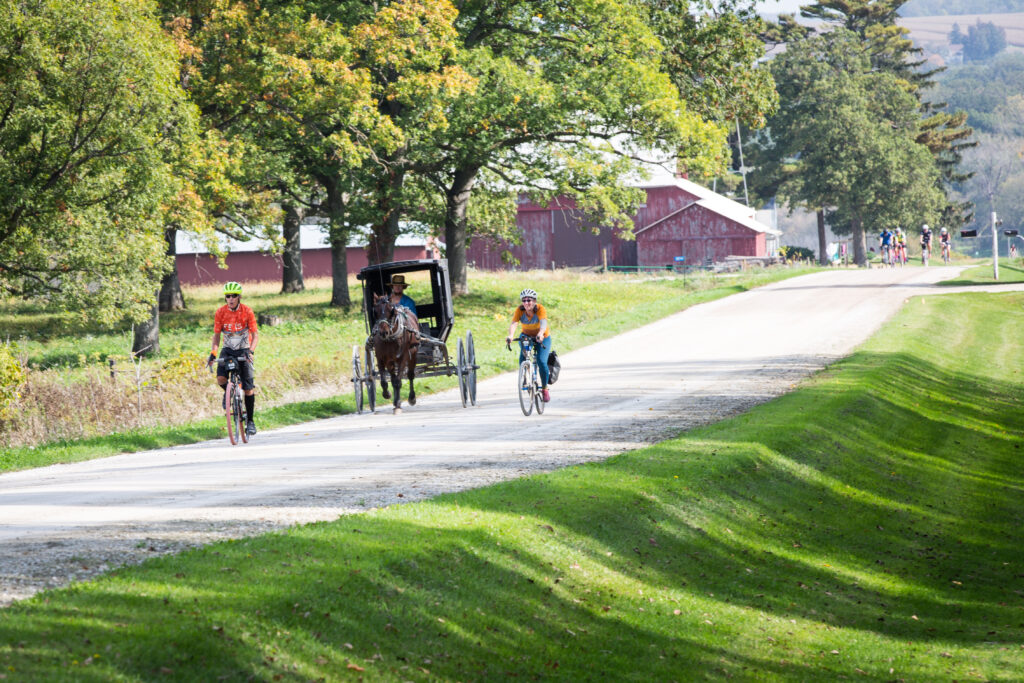
Nocturnal dreaming fits this formulation. Like daydreaming, nocturnal dreaming correlates with activity in the Default Mode. And like activity in the Default Mode in general, dreaming is often fearful. Not all dreams are nightmarish, but most of them have a negative element. In a 2015 paper, I reviewed various lines of evidence that suggest that dreaming is an evolved system for working out solutions to past and anticipated conflicts between approach and avoidance. I also noted that if this is true, it has implications for understanding personality, politics, and culture.15
We have suggested that the Task Mode is conscious because it deals with novelty, but Friston and Solms also help us understand why the Default Mode is conscious. The Default Mode updates or reconsolidates memory by playing with possibilities generated by its own imagination or with information about novelty from the external networks. In either case, it is conscious because it is working with novelty, either because it is reconsolidating old memories or processing fresh experiences with novelty in the real world. Remembering or reconsolidating memory is conscious because it invariably places memory in a new and
therefore novel context.
IV
The Default Mode learns from experience in the Task Mode. Accordingly, transcendence changes people. In my experience of various endurance sports over the years, runners, multi-pitch rock climbers, mountaineers, and gravel riders are notable for their tranquility, modesty, comradery, love of nature, and pleasure in life. An article in Outside Magazine allowed that, “Seasoned endurance athletes are known for their Zen-like aura and ability to stay cool, calm, and collected under pressure—on and off the race course.” The article then cites Kelly McGonigal. In her book on stress, McGonigal reviews recent research that shows that stress is not necessarily bad for us. It does not always increase risks for cardiovascular events. To the contrary, when we are confident, adversity, stress, and suffering promote not only joy but also cardio-respiratory health and longer life.
It is noteworthy that oxytocin, the love and bonding hormone, facilitates switching from the Default Mode to the Task Mode or external awareness. Bonding and love are the opposite of self-absorption. But this is only part of the oxytocin story. As McGonigal notices, oxytocin is a stress hormone as well as a bonding hormone. In evolutionary perspective, the switch from Default Mode activity to the Task Positive Mode happened with movement into the outside world. It anticipated foraging and exposure to risks and dangers. The dangers were considerable. The African savanna was rife with big cats, huge snakes, and giant, baby-snatching raptors.
Oxytocin helped mediate positive responses to adversity. There was safety on the savanna in being with others. The sense of safety was further increased by love for nature. Loving and being loved by family and friends and loving nature and feeling nurtured by it increased courage. We begin to understand why compassion, love, courage, and curiosity are linked together in transcendental experience. Provided we have positive expectations, we are designed to thrive spiritually as well as physically when we move into the unknown, exercise hard, and face adversity, especially when we are in the company of people we trust and care about. The emotional and physical effects of long-distance movement are mutually supportive.
During positively experienced stress, oxytocin helps us feel love for what we are doing and where we are, and it helps the heart mend and remodel itself after micro-tears from exertion.16
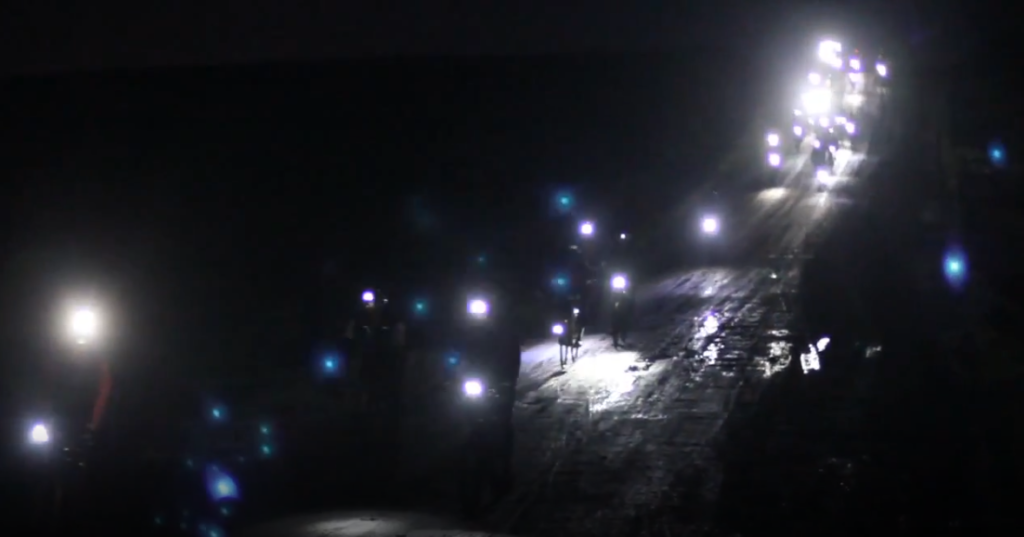
De-activation of the Default Mode and activation of the Task Mode can in turn influence the Default Mode, leaving it less egoistic, anxious, and rigid and more interested in the world, more courageous, and wiser. There are many methods for quieting the Default Mode. All of them can produce beneficial effects on the mind and body, although some are more potent in this way than others. Mindfulness meditation and aerobic exercise are especially transformative. Various studies have shown that they reduce anxiety and depression.17 Keep in mind, though, what we have been learning. Bets are off the more one thinks that meditation or sport makes one special or superior. Highly competitive athletes are just as likely to experience depression or anxiety as people in the general population, maybe more so.18 Action as non-action and humility while letting success take of itself are probably the deciding factors. And then there is psilocybin and other hallucinogens. As Michael Pollan has shown in his How to Change the Mind: What the New Science of Psychedelics Teaches Us About Consciousness, Dying, Addiction, Depression, and Transcendence (Random House, 2018), psilocybin has a spectacular ability to quiet the Default Mode Network, amplify awareness, and ameliorate anxiety, depression, and addiction.19
V
Exploring and foraging involve approach vs. avoidance conflicts. As we have seen, the dopaminergic SEEKING system conflicts with avoidant default reactions to surprise. In time, however, a novelty may seem less threatening, either because further encounters reveal that it is not so dangerous or because one learns more effective coping strategies than running away. Animal species and individual human beings vary in how closed or open they are to the unexpected. From the beginning, openness, curiosity, and courage have been preponderant features of the hominid-human line. Our ancient ancestors succeeded by making openness to entropy, surprise, and danger a path to more ability to cope with them. They reduced the gap between their models of the world and reality by enlarging their models.
Six or seven million years ago a chimpanzee-like ape left behind the main branch of chimpanzees and the safety of heavily forested riverine environments and moved into more daunting woodlands and open savanna. These future human beings acquired additional wherewithal for exploration with upright posture and an ability to walk long distances about 4.5 million years ago and by acquiring the skeletal and muscular structure and thermoregulation for endurance running by about two million years ago. Along the way, they developed capacities for flow, awe, altered states of consciousness, and biophilia that made hours of gathering while carrying babies and persistent hunting rewarding. About two million years ago, they also began developing larger brains. Thus prepared, they began spreading into unfamiliar niches over much of the planet. The two evolutionary progressions were interrelated. Running helped maintain expanding brains and bigger brains in turn supported running. Running promoted neurotrophic growth factor and thus more white and grey matter, while brains made long-distance walking and running easier with endorphins, cannabinoids, and altered states of consciousness.20 Joy became part of moving. Larger brains supported navigating and tracking over long distances and more intelligent responses to the unexpected and dangerous. Some anthropologists are concluding that evolved, biological capacities for transcendence, love for the natural world, courage, spirituality, and joy developed in support of long-distance running. One anthropologist describes it as “running deep,”21 a phrase that alludes to “deep play,” play that is dicey and sketchy and yet ecstatic, meaningful, and spiritual.22
If I am on the right track, we play with returning to the ancestral scheme when riding and racing gravel over long distances. Our bodies do what they do best. We improve the odds of living healthier, longer lives. We encourage the better angels of our nature. We learn from the unexpected and take joy in effort, even when it is uncomfortable or perhaps because it is uncomfortable. We ride together and share the suffering and joy. We expand awareness of the world around us. We lose our self-importance and gain something far more precious. We experience life itself.
______________________________________________________________________________________
1 Mark Sisson and Brad Kearns, Primal Endurance (Primal Blueprint Publishing, 1916); John J. Ratey, M.D. and Richard Manning, Go Wild: Eat Fat, Run Free, Be Social and Follow Evolution’s Other Rules for Total Health and Well-Being (Little Brown, 2014).
2 Dennis M. Bramble and Daniel E. Lieberman, “Endurance running and the evolution of Homo.” Nature, 2006, v. 432: 345-352,
3 Kyle Mandsager, Serge Harb, Paul Cremer, et al., “Association of cardiorespiratory fitness with long-term
mortality among adults undergoing exercise treadmill testing,” JAMA Network Open, 2018, v. 1(6): e183605. Peter Attia, “#206-Exercising for longevity, strength, stability, zone 2, zone 5, and more”
(https://peterattiamd.com/exercising-for-longevity/).
4 Mark Solms and Karl Friston, “How and why consciousness arises: Some considerations from physics and physiology.” Journal of Consciousness Studies, 2018, v.19: 202-238; Mark Solms, The Hidden Spring: A Journey to the Sources of Consciousness (W. W. Norton, 2021).
5 Brian Earl, “The biological function of consciousness.” Frontiers in Psychology, 2014, v. 5: 1-18.
6 Katja Brodmann, Oliver Gruber, and Roberto Goya-Maldonado, “Intranasal oxytocin selectively modulates large-scale brain networks in humans,” Brain Connectivity, 2017, v. 7: 454-463.
7 See Dimitri van der Linden, Mattie Tops, and Arnold B. Baker, “Go with the flow: a neuroscientific view on being fully engaged,” European Journal of Neuroscience, 2020, v. 53: 947-963, for one of the better recent papers on the neurobiology of flow.
8 Mihaly Csikszentmihalyi, Flow: The Psychology of Optimal Experience. Harper Perennial, 1990.
9 Steven Kolter, The Rise of Superman: Decoding the Science of Ultimate Human Performance (New Harvest, 2014).
10 Jason S. Gaekwad, Anahita Sal Moslehian, Pillip B. Roos, et al. “A meta-analysis of emotional evidence for the biophilia hypothesis and implications for biophilic design,” Frontiers in Psychology, 2022, v. 13: 1-19.
11 Alice Chiricoa and Andrea Gaggioli, “The continuum of self-transcendence: flow experience and the emotion of awe,” Annual Review of Cyber Therapy and Telemedicine, 2018, v. 16: 67-72.
12 Kelly McGonigal, The Joy of Movement: How Exercise Helps Keep Us Find Happiness, Hope, Connection, and Courage (Random House, 2019), p. 52, Kindle edition.
13 Timothy Gallwey’s books on the “inner game” are the best things I have read on using flow to acquire athletic skills and to improve performance, much more helpful in my opinion that Kotler. See E. Timothy Gallwey, The Inner Game of Tennis (Random House, 1972).
14 Elvis Dohmatob, Guillaume Dumas, and Danilo Bzdok, “Dark control: The default mode network as a
reinforcement learning agent.” Human Brain Mapping, 2020, v. 41: 3318-3314; see also Deniz Vatansever, David K Menon, and Emmanuel A. Stamatakis, “Default mode contributions to automated information processing.” PNAS, 2017, v. 114: 128-12826 and Farzin Shamloo and Sebastien Helie, “Changes in Default Mode Network as Automaticity Develops in a Categorization Task.” Elsevier, http://www.elsevier.com/open-access/userlicense/1.0/.
15 John Ingham, “Dreaming about love and danger: A holistic bioevolutionary perspective on personality, politics, and culture,” Ethos: Journal of the Society for Psychological Anthropology, 2015, v, 43: 221-246.
16 Kelly McGonigal, The Upside of Stress: Why Stress Is Good For You, And How To Get Good At It (Random House, 2015), p. 52, Kindle edition.
17 Sy Atezaz Saeed, Karlene Cunningham, and Richard M. Bloch, “Depression and anxiety disorders: Benefits of exercise, yoga, and meditation.” American Family Physician, 2019, v. 15:620-627.
18 Claudia L. Reardon, “Psychiatric comorbidities in sport.” Neurologic Clinics, 2017, v. 35:537-546.
19 Michael Pollan, How to Change Your Mind: What the New Science of Psychedelics Teaches Us About
Consciousness, Dying, Addiction, Depression, and Transcendence (Random House, 2018).
20 Jay Schulkin, “Evolutionary basis of human running and its impact on neural function.” Frontiers in Systems Neuroscience, 2016, v. 10, article 59.
21 Robert R. Sands and Linda R. Sands, “Running deep: Speculations on the evolution of running and spirituality in the genus Homo.” Journal for the Study of Religion, Nature, and Culture, DOI: 10: 1558/jsrnc.v.3i4.552.
22 Diane Ackerman, Deep Play (Vintage Books, 1999).



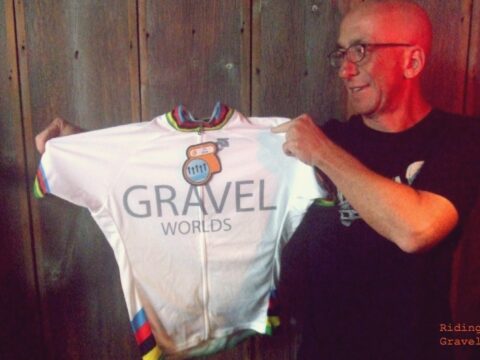

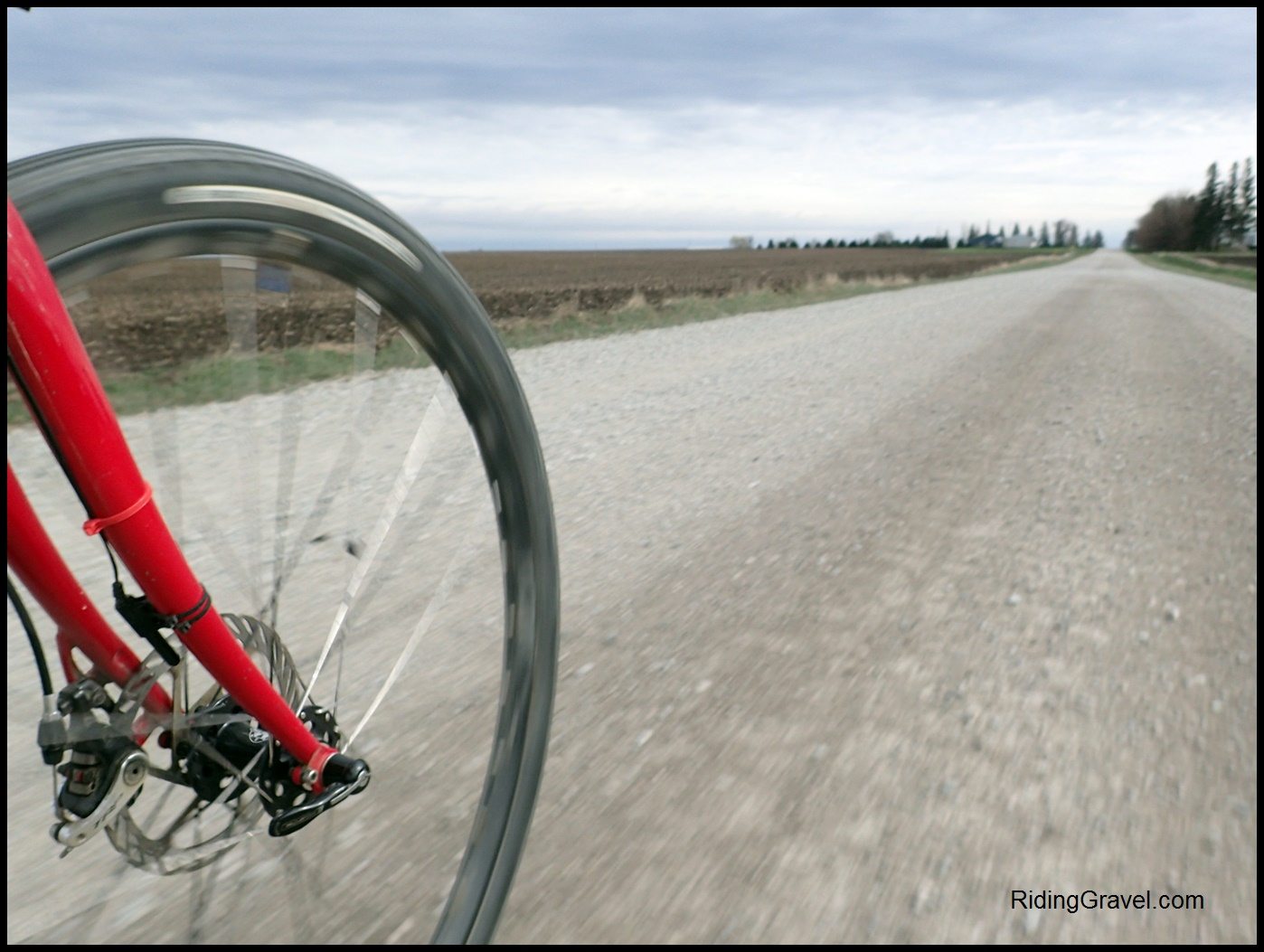
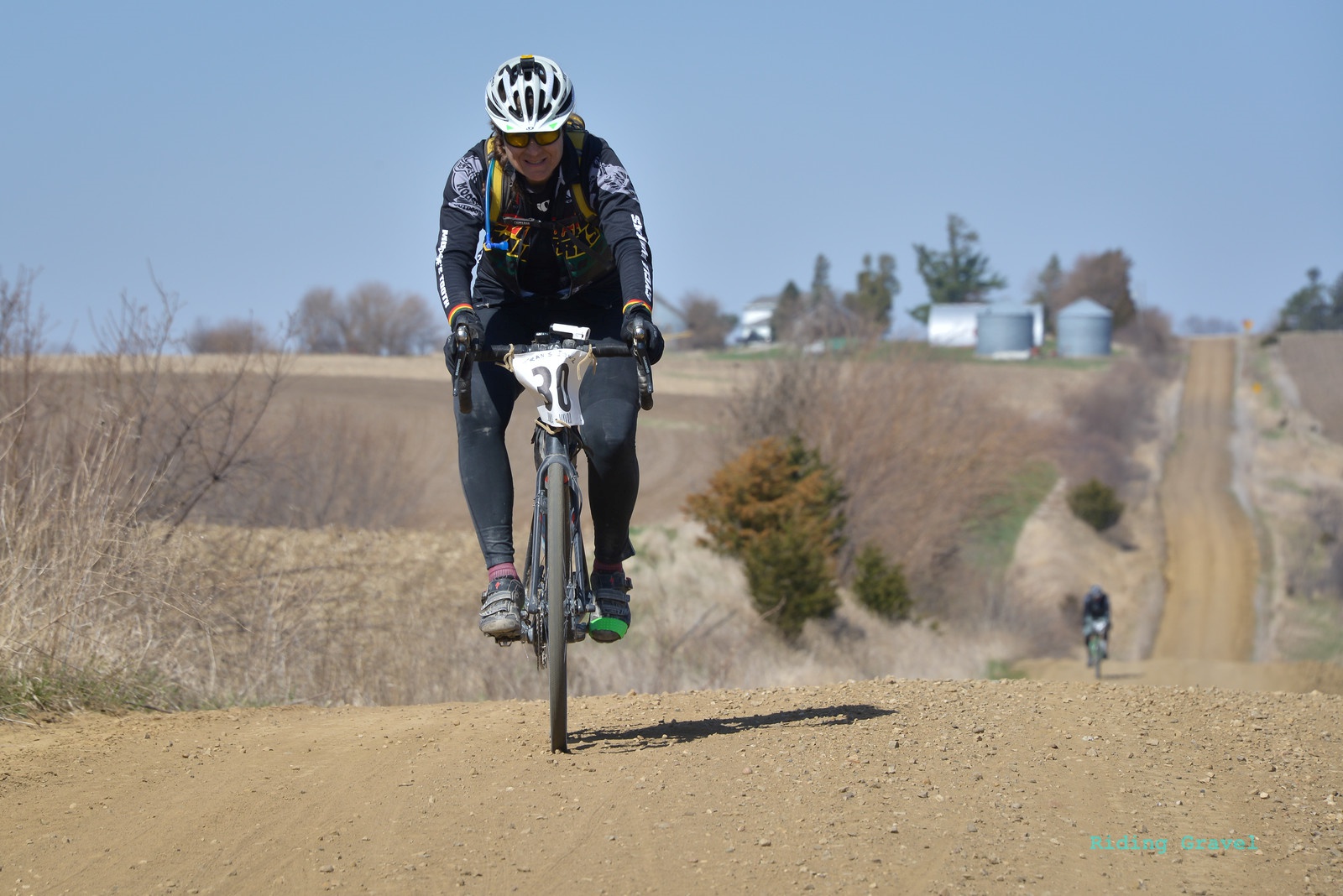
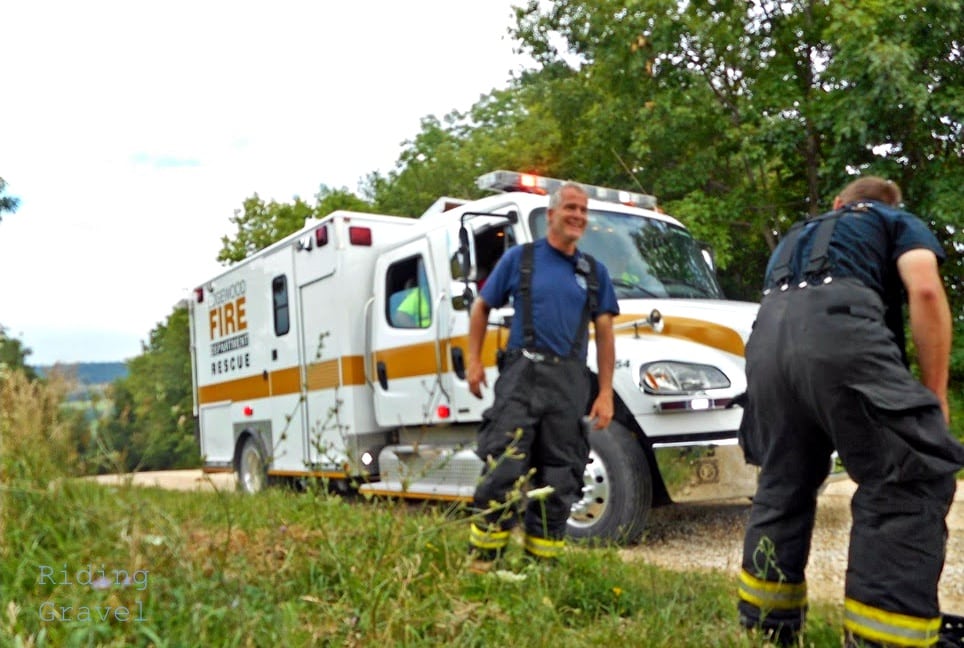
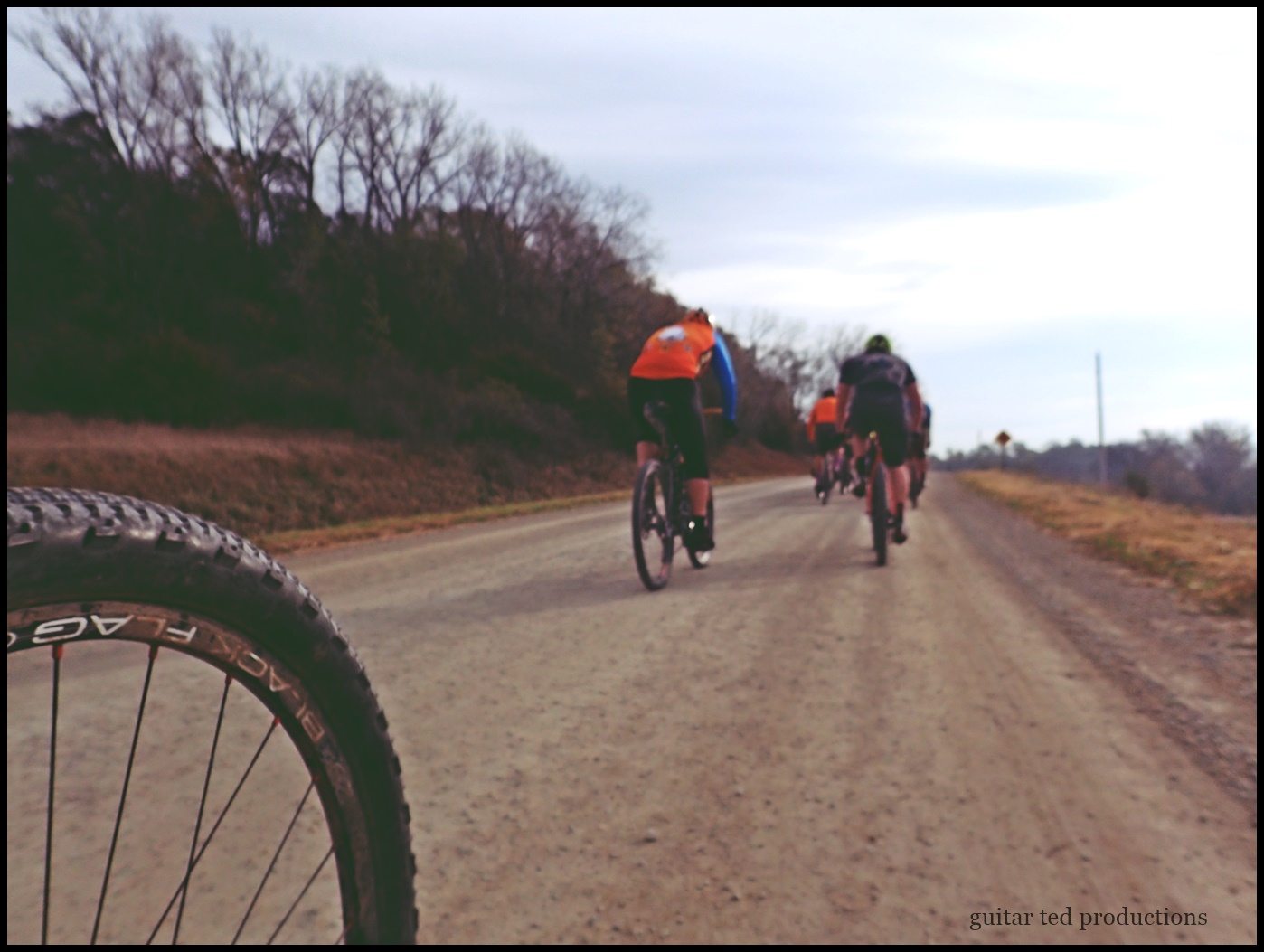
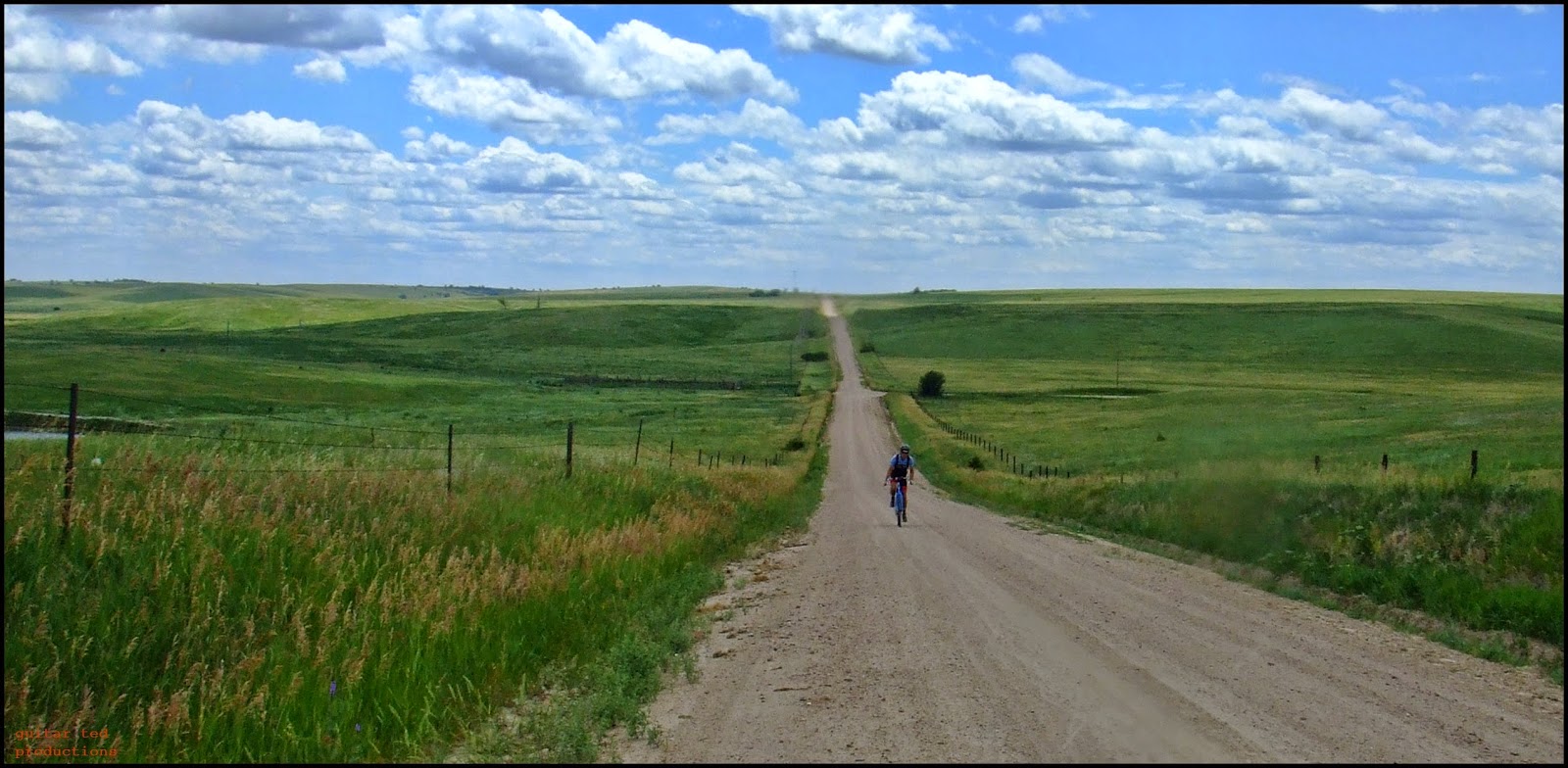
This article is a great complement to the one you did on nutrition a few years ago. It is especially insightful on the movement back and forth between, interdependence of, and dynamic synergy between task and default modes. And that underlying pattern echoes and illuminates many others, including, for example, structure-antistructure.
I found your article thanks to your prior work at Rice, my alma mater (it was posted on a Rice-centric Facebook page). I enjoyed it greatly, and while gravel riding will never be my true love (I’ve been racing road bikes since 1989), I’ve experienced much of what you describe, and your words resonated with me. For example: “Flow also happens when we are absorbed by what we are doing and not thinking about results. Focusing on minimal gains during a race is more likely to produce flow, and more likely to increase mph, than daydreaming about having a great finish.” A primary reason I love to ride is that it enables me to “shut off my brain” from everyday cares and instead live in the moment. My racing successes have been modest, but when I _do_ win, it’s typically when I truly didn’t expect to, but I completely immerse myself in the race, act intuitively, and manage to achieve a state of flow. The win just…happens. Fitness and skill are still necessary, of course, but quieting the ego, losing the fear of failure, simply becoming an infinitessimal particle in the cosmos and basking in the agony and the ecstasy the cosmos provides is a sublime feeling. Thanks again for putting it into words.